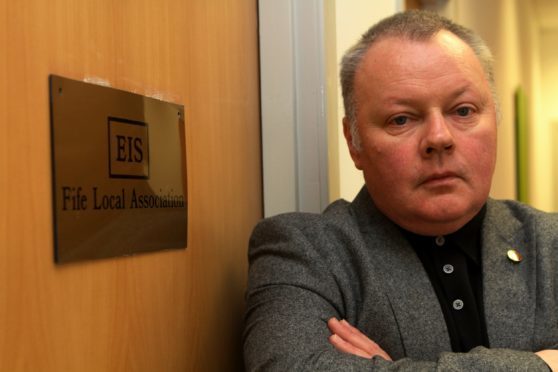An increasing workload and difficulties managing pupil behaviour have been blamed for a rise in stress-related absence among teachers in Fife’s schools.
The Courier revealed on Monday almost 16 years’ worth of sick days were suffered by teaching staff across the kingdom last year, with a total of 5,825 full-time equivalent working days lost as a result of stress alone.
A further 1,802 days lost were put down to other mental health or nervous disorders according to figures obtained by the Scottish Conservatives, prompting concerns about the amount of pressure faced by teachers.
Concerns over ‘staggering’ number of Fife teaching days lost due to stress
David Farmer, from the Fife branch of the EIS, said the teaching union welcomes anything that casts light on the problem.
“Workload is a major part of teacher stress.
“Nationally, the EIS is conducting a campaign 20/20 which seeks to genuinely reduce workload for Scottish teachers, as well as reducing class sizes.
“Locally, Fife EIS is engaging with members, organising meetings to get this workload and class size message across.
“Systems of working create this pressure and most definitely not individual teachers.
“We welcome efforts by the local authority to support staff but the key here is reducing workload and the concomitant stress from workload.”
Mr Farmer said the union was, anecdotally, aware behaviour management is also a “major cause” of teacher stress, with unruly pupils and violent incidents at schools a source of concern.
“Fife EIS works with the local authority to try to address these issues.
“That said, we are all too aware the time addressing these can take but we will not relent in our efforts.
“A good example of the joint working can be seen in the creation of an online reporting system for violent incidents.
“We recognise that the numbers consistently increase but we are very much aware this reflects staff empowerment to report.
“We hope the continuing interrogation of the statistics can and will feed into strategies to better manage behaviour.”
Councillor Fay Sinclair, convener of Fife’s education and children’s services committee, said: “Whilst we have mental health and stress high on our agenda, we know that work-related interventions will not be enough to support some employees whose stress is from outside the workplace.
“Difficult situations outwith employment can have a tremendous impact on the health and wellbeing of staff too and we recognise that anyone who is unwell may need time away from work, to enable them to return to work well.
“To help, our employee counselling service has been reprofiled to enable employees to self-refer and we are working towards introducing a network of Mental Health First Aiders. These interventions supplement existing services on offer such as occupational health, family friendly policies and training.”










